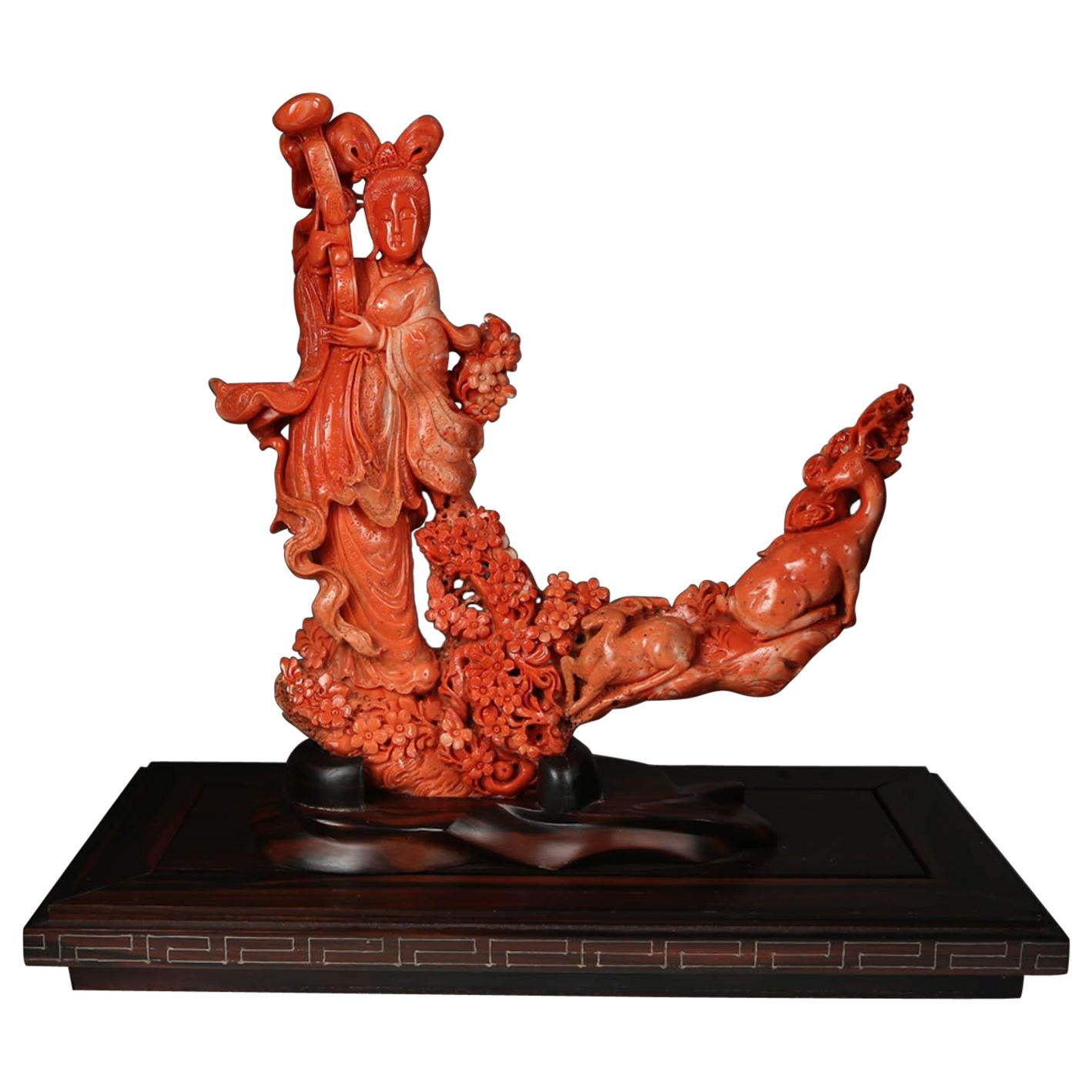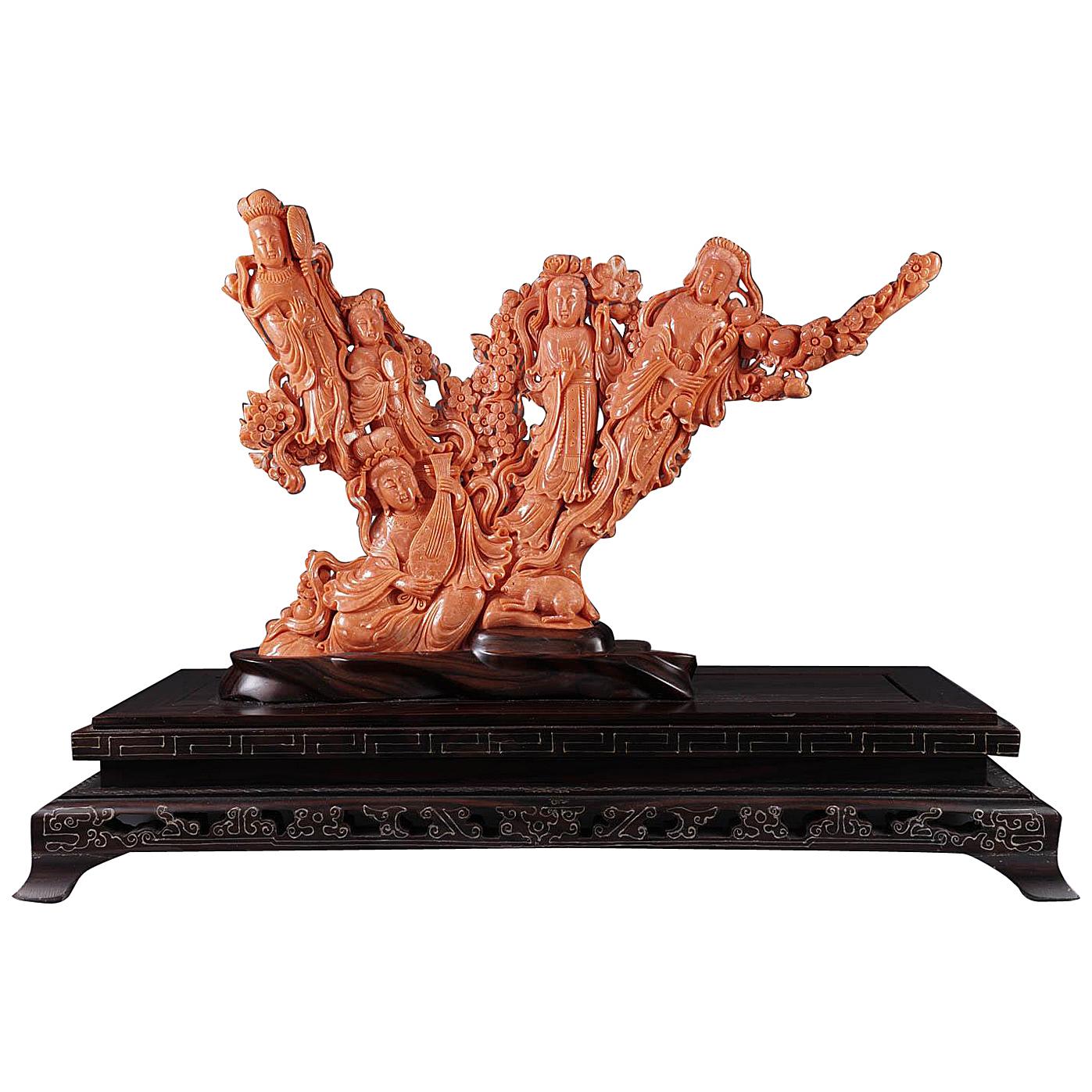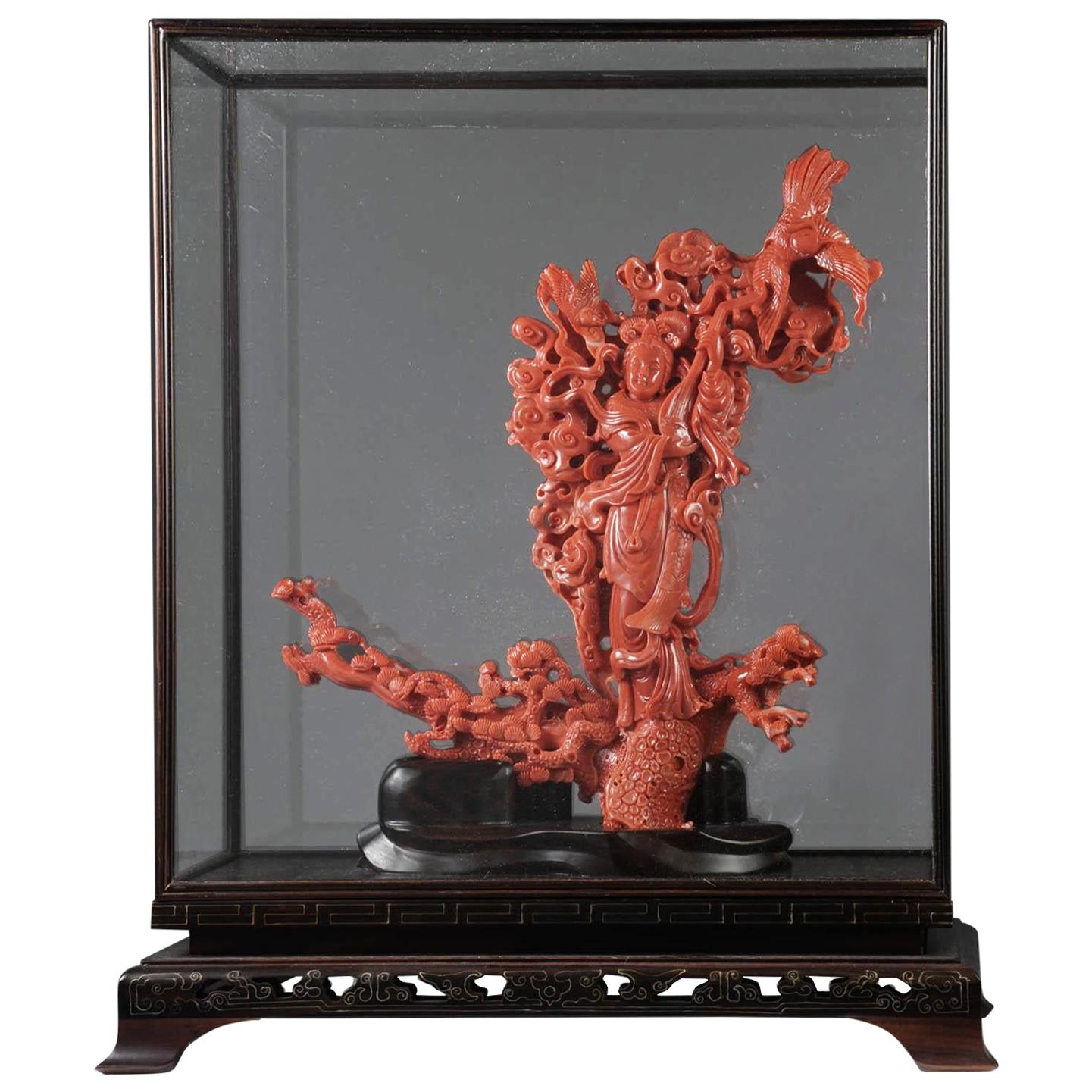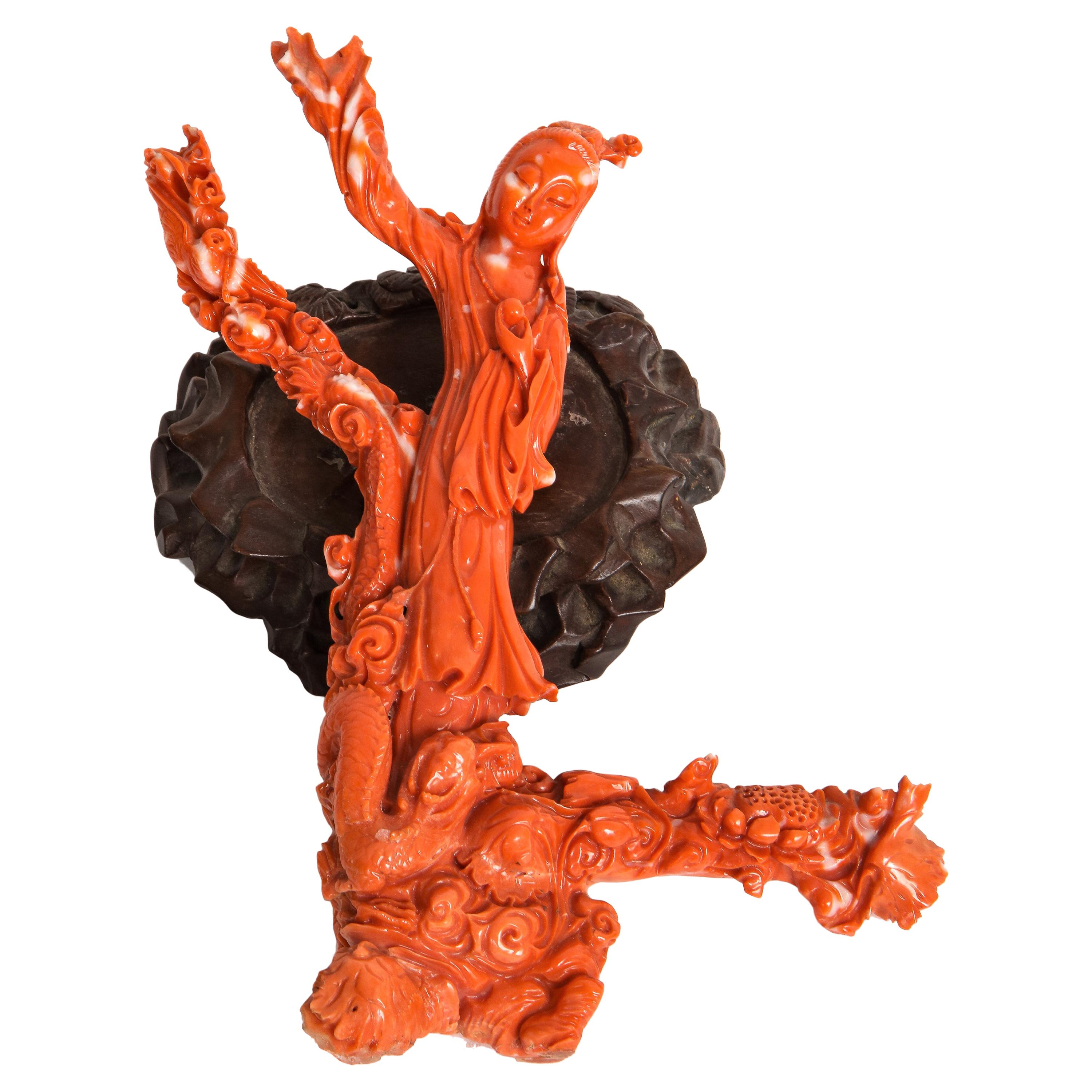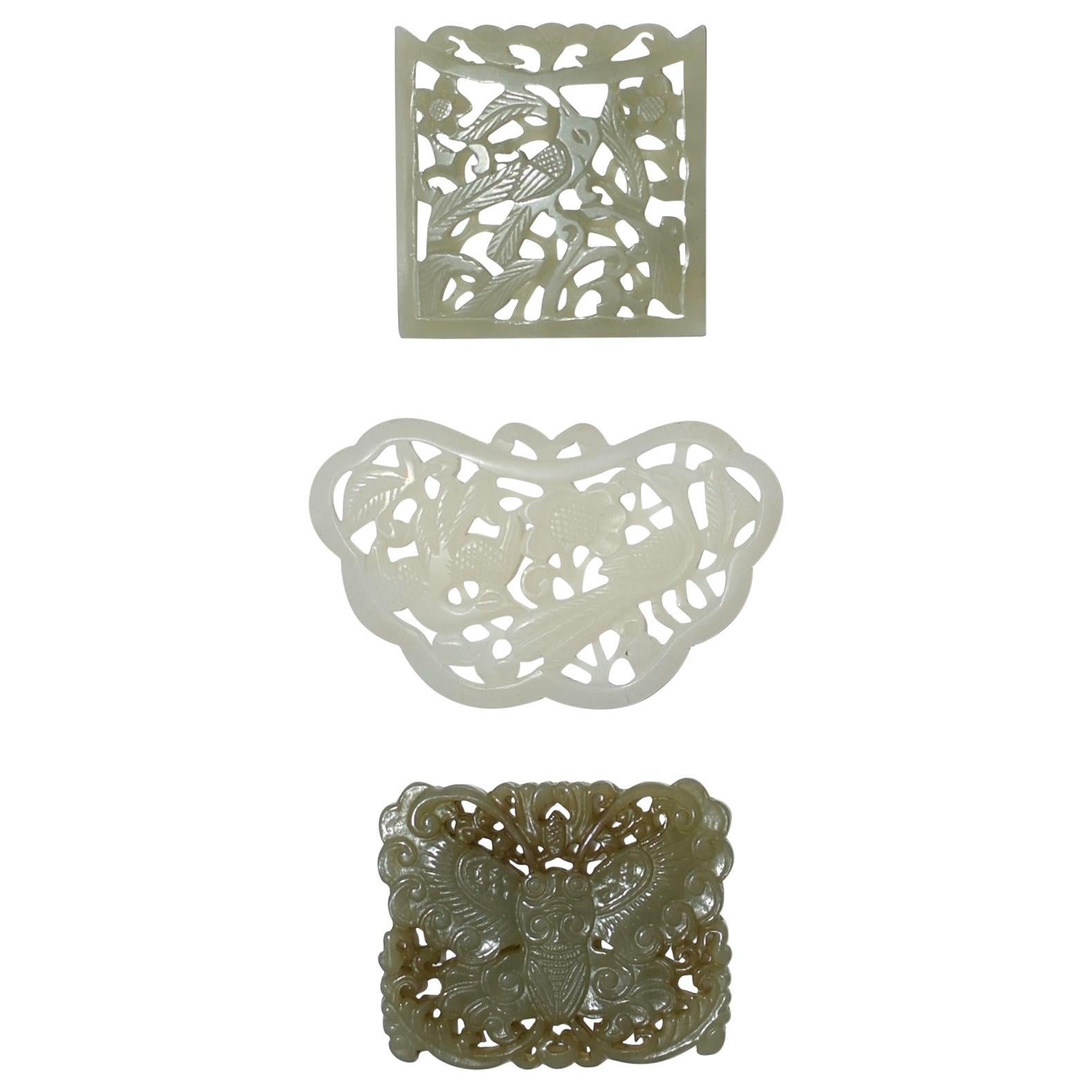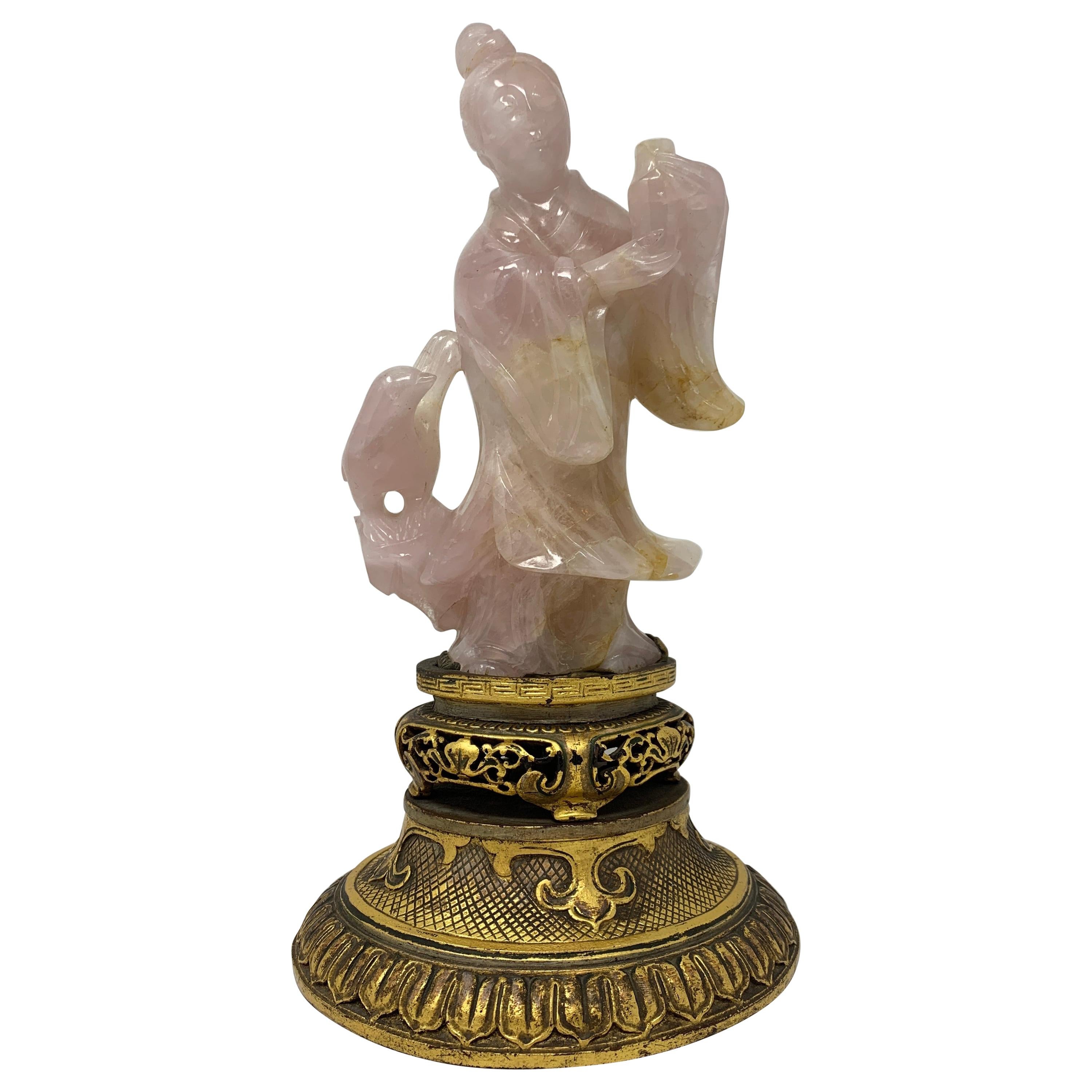Items Similar to Exceptional Chinese Carved Coral Figural Group of a Boat with Eight Immortals
Want more images or videos?
Request additional images or videos from the seller
1 of 16
Exceptional Chinese Carved Coral Figural Group of a Boat with Eight Immortals
About the Item
An exceptional Chinese carved coral figural group or statue of a boat with eight immortals. The boat in a form of a carved dragon with fish throughout.
Very finely carved.
Coral measures: 10" high x 12" wide x 1" deep
Coral weight: 1.275 grams.
Very good condition.
- Dimensions:Height: 10 in (25.4 cm)Width: 12 in (30.48 cm)Depth: 1 in (2.54 cm)
- Materials and Techniques:
- Place of Origin:
- Period:
- Date of Manufacture:circa 1900
- Condition:
- Seller Location:New York, NY
- Reference Number:1stDibs: LU1798214261951
About the Seller
5.0
Vetted Seller
These experienced sellers undergo a comprehensive evaluation by our team of in-house experts.
Established in 1980
1stDibs seller since 2016
58 sales on 1stDibs
Typical response time: <1 hour
- ShippingRetrieving quote...Ships From: New York, NY
- Return PolicyA return for this item may be initiated within 7 days of delivery.
More From This SellerView All
- Exceptional Large Chinese Carved Coral Figural Group Statue of Female ImmortalsLocated in New York, NYAn exceptional and large Chinese carved coral figural group / statue of female Immortals. Very finely carved, very large and heav...Category
Early 20th Century Chinese Sculptures and Carvings
MaterialsCoral
- Exceptional Chinese Carved Coral Figure of a Guanyin with DeerLocated in New York, NYAn exceptional Chinese carved coral figure of a Guanyin with deer. Very finely carved. With original wooden base. Measures: Coral: 12" high x...Category
20th Century Chinese Sculptures and Carvings
MaterialsCoral
- Exceptional Chinese Carved Coral Figural Group of a Guanyin Kwan Yin PhoenixLocated in New York, NYAn exceptional Chinese carved coral figural group of a Guanyin, Kwan Yin with a Phoenix. Very finely carved. In a custom made glass...Category
Early 20th Century Chinese Sculptures and Carvings
MaterialsCoral
- Rare Palace Size Chinese Carved Cinnabar Lacquer Figural Box and Cover, QingLocated in New York, NYA rare palace size Chinese carved cinnabar lacquer figural box and cover, Qing Dynasty This palace size box and cover is a rare and exquisite piece of art made in the 19th century...Category
Antique 19th Century Chinese Lacquer
MaterialsLacquer
- Exceptional and Rare Islamic Alhambra Bronze and Enameled Glass ChandelierLocated in New York, NYAn exceptional and rare Islamic Alhambra bronze and enameled glass six-light mosque chandelier, circa 1870. This one of a kind, exceptionally elegant, jewel-quality chandelier, is one of the most beautiful chandeliers we have seen in this style. The ormolu is phenomenal, the enameled glass balls on the chain are beautiful, and of course the ruby red glass plates...Category
Antique 19th Century French Islamic Chandeliers and Pendants
MaterialsBronze
- Monumental Pair of Chinese Sancai Glazed Pottery Figures of Guan Yin and LionLocated in New York, NYA Monumental pair of Chinese Sancai Glazed pottery figures / sculptures of Guan Yin and Lion on Wood Bases Chinese sancai glazed figures of Guan Yin and lion are a type of ceramic artwork that originated in China during the Tang dynasty (618-907 AD). "Sancai" means "three colors" in Chinese, and refers to the use of three distinct colors of glaze (usually green, yellow, and white) in the creation of these figures. Guan Yin is a Chinese bodhisattva associated with compassion and mercy, and is often depicted holding a vase of healing elixir or a willow branch. The lion, on the other hand, is a symbol of power and strength, and is often used as a guardian figure in Chinese mythology. The combination of Guan Yin and lion in a single artwork is significant, as it represents the union of mercy and power, a common theme in Buddhist and Taoist philosophy. Sancai glazed figures of Guan Yin and lion are highly valued by collectors and art enthusiasts due to their intricate design and rich history. They are often displayed in museums and galleries around the world, and are considered important cultural artifacts...Category
20th Century Chinese Ceramics
MaterialsPottery
You May Also Like
- Chinese Hand-Carved Coral Sculpture Guanyin and DragonLocated in New York, NYChinese Gwandian carved coral sculpture Guanyin and Dragon Very finely hand-carved. Circa Late 20th century, China Weight: With stand: 360.6 ...Category
Late 20th Century Chinese Sculptures and Carvings
MaterialsCoral
- Jade Carving Group Finely CarvedLocated in Somis, CAThis special collection comprises a three-dimensional celadon jade carving of a magpie perched on plum blossom branches, symbol of happiness; a Ruyi shap...Category
20th Century Chinese Sculptures and Carvings
MaterialsJade
- Antique Chinese Rose Quartz FigureLocated in New Orleans, LAThis figure is sitting atop a nice pedestal. A very pretty piece of carved rose quartz.Category
Antique Late 19th Century Chinese Sculptures and Carvings
MaterialsRose Quartz
- Pair of Chinese Gold Gilded Carved Wood Wall Panels, China, C.1920Located in London, GBA superb pair of elaborately carved Chinese gilded panels, depicting a warrior scene. China, C.1920 In very good condition commensurate of age, with some...Category
Early 20th Century Chinese Sculptures and Carvings
MaterialsGiltwood
- Chinese Guan Yin Figure Early Ming DynastyLocated in Lymington, GBA rare Chinese Guan Yin figure, early Ming dynasty (1368-1644). Beautifully painted carved wood retaining a significant amount of its apparently or...Category
Antique 15th Century and Earlier Chinese Ming Sculptures and Carvings
MaterialsWood
- Japan 1890 Meiji Period Signed Assembling of Okimono with a Group of SkeletonsLocated in Miami, FLA signed Okimono from the Japanese Meiji period (1868-1912). Very rare, unusual and large sculptural assembling of a dysplaying piece of okimono. Created in Japan during the imperial period of the Meiji (1868-1912). This extraordinary piece okimono sculpture depict a group of four intricately and realistically rendered carousing males skeletons representations (Gaikotsu) standing in several position. One skeleton is crouched down playing with mouses in the floor. The second is seated resting in the other's back, peacefully smoking opium. The others two are fully standing in interacting position. The entire composition is arranged freely displayed on the wood base including a woven basket, apparently with food and four playfull mouses. There are an extra five mouses in different positions, freely playing around, all of them with the eyes accented with carved black ebony. The composition is displayed on a four-legged free form carved wood platform with an inlaid red plaque engraved with the artist's signature. The level of detail and the quality of the carving is truly exceptional. Has an exact measurements of 216.15 mm by 139.7 mm by 359.41 mm (8.51 x 5.5 x 14.15 Inches). After an extensive collection of data, comparables and references to this piece, we have only been able to find only three okimono sculptures like this, with similar themes and the same quality of work. References Note: A similar carving of four skeletons playing an animated game of dominos, signed Shutaro in an inlaid rectangular red plaque, was sold in London by Christie’s South Kensington in October 14 2014, Lot 120 Sale 5546. References Note: A similar carving with four skeletons in an otherwise typical victorian scene of a photographer and three sitters signed Shutaro in an inlaid rectangular red plaque, was sold in Edinburgh at Lyon & Turnbull in November 7, 2018. References Note: A similar carving with five skeletons seated, playing cards and drinking, was sold in London by John Nicholson Fine Art on September 26, 2018. Meiji period, is an era of Japanese history that extended from October 23, 1868 to July 30, 1912.The Meiji era was the first half of the Empire of Japan, when the Japanese people moved from being an isolated feudal society at risk of colonization by Western powers to the new paradigm of a modern, industrialized nation state and emergent great power, influenced by Western scientific, technological, philosophical, political, legal, and aesthetic ideas. As a result of such wholesale adoption of radically different ideas, the changes to Japan were profound, and affected its social structure, internal politics, economy, military, and foreign relations. The period corresponded to the reign of Emperor Meiji. It was preceded by the Keio era and was succeeded by the Taisho era, upon the accession of Emperor Taisho. Okimono, is a Japanese term meaning for display an ornament; art object; or decorative object, usually displayed in a tokonoma or butsudan "Buddhist altar". It is an ornament or figure, especially one placed in a guest room. An okimono may be a small Japanese carving...Category
Antique 1890s Japanese Meiji Sculptures and Carvings
MaterialsWood
